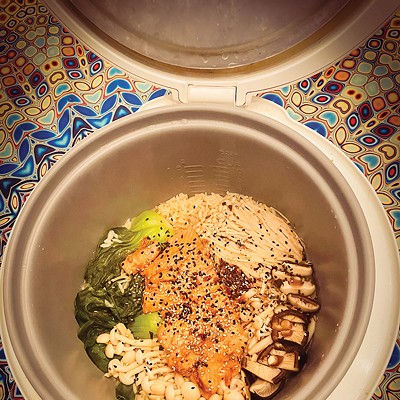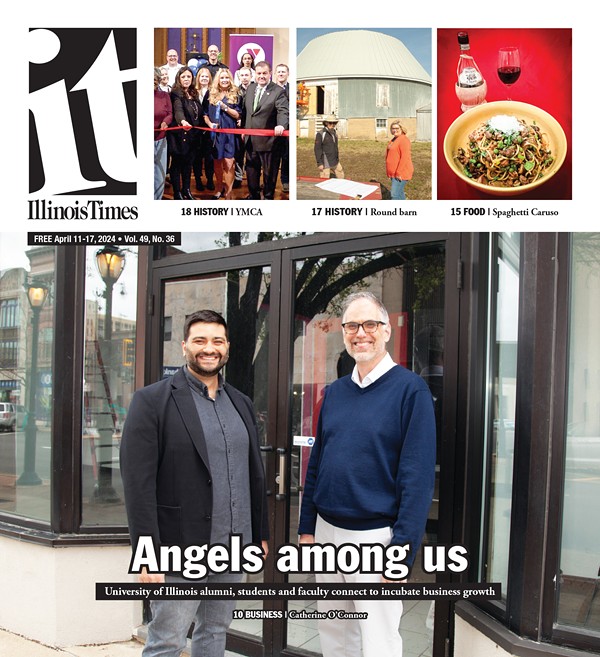
I was talking with my bandmates during our break the other day about the death of Tom Petty, Gregg Allman and all the other music heroes we have lost in the last year. The conversation morphed into a discussion of our own health statuses. One member is dead, one is undergoing chemotherapy, one had a bypass and two members had stents placed. We all agreed: if we knew we were going to live to be this old, we would have taken better care of ourselves.
The prevailing dietary “wisdom” of the last few decades (eat less and exercise more) has been proven to be ineffective. When the American Heart Association announced that we needed to consume high carbohydrates with low fat content, the obesity rates soared. It should surprise no one that prevailing attitudes and dietary recommendations were fueled by the food industry. When the finger was pointed at fats, our grocery shelves became filled with low-fat, no-fat options. When the finger was pointed at carbs, the shelves filled up with low-carb, no-carb products. When foods containing gluten became vilified, sales of gluten-free options soared. The overall consequence was increased dependence on more highly processed food products -- and it turns out that processed foods helped create the problems in the first place!
In his 2016 book, The Obesity Code, nephrologist Jason Fung provides the best explanation of what really seems to be causing the obesity and type-2 diabetes epidemics our society is facing. The science is beyond the scope of this food column, but his conclusions and recommendations are very relevant.
Like other diet strategies, Fung tells us what to eat (and what foods to avoid):
-Reduce your consumption of added sugars
-No snacking
-Make breakfast optional
-No beverages with sugar or artificial sweeteners
-Reduce your consumption of refined grains
-Moderate your protein consumption
-Increase your consumption of natural fats
-Increase your consumption of fiber and vinegar
Many of these recommendations parallel other popular diet strategies. What differentiates Fung’s approach is his advice about when to eat. This, he feels, is the missing piece to the puzzle. The missing piece is the concept of intermittent fasting.
Intermittent fasting is not a new concept; it was advocated by Hippocrates and has played a role in many traditional religious practices. Jesus Christ, Buddha and the prophet Muhammad all shared a belief in the spiritual benefits of fasting. Regular fasting reduces insulin levels,wwwwww resulting in the body switching over to burning stored fat for energy.
For the last 90 days, I have participated in a group study based on Fung’s book with 40 members of my CrossFit gym:
-We undergo a medically supervised body composition analysis every 30 days. Of special interest is the amount of deadly fat around our organs (visceral fat).
-We eat ALL our meals within an eight-hour period and fast for 16 hours.
-We do not snack between meals.
-We do not eat within two hours of our bedtimes.
-We eat NO processed foods, no dairy, no grains, no sugar, little starch and only some fruit.
-We design our meals menus around the following ratio: 30 percent protein, 30 percent fat and 40 percent carbohydrates (vegetables).
Our results have been dramatic, both in terms of total weight loss and reduction of visceral fat to healthy levels. Adopting the regime into our lifestyles, however, has presented some challenges.
The post-war shift in workplace demographics has left most households without a stay-at-home family member to prepare meals, hence our reliance on processed convenience foods and meals eaten out. Incorporating the protocols of our study into daily life has required some of us to develop basic cooking skills and careful time management. I will be addressing these issues and offering up suggestions on how to incorporate this new dietary paradigm into your life.
The incorporation of 8/16 fasting for most of us has necessitated decreasing our food consumption to two meals a day. I leave for work at 6:30 a.m. I eat lunch at 11:30. This means that I need to finish eating my dinner by 7:30. I get home at 5 and therefore have two and a half hours to prepare the night’s dinner and tomorrow’s lunch. This requires a bit of planning and organization.
I try to grocery shop on weekends and prepare ahead components of the upcoming week’s meals as much as possible. I’ll often make a large pot of stewed greens or vegetables for Sunday dinner’s side dish and package and freeze the remainder in single meal servings for the weeks ahead. I’ll repackage larger amounts of meat into single meal dinner portions. I’ll usually package enough to have some leftover meat or fish to provide the protein component for the next day’s lunch. If there is nothing left over, I’ll hard-boil a couple eggs instead.
Following the recommended ratio of meals consisting of 30 percent protein, 30 percent fat, 40 percent carbohydrates, I prepare the next day’s lunch during the previous day’s dinner prep. I’ll begin by laying down a base of lettuce, spinach or arugula in a sealable plastic container. I will then build up layers of thinly sliced raw vegetables. I use a $30 plastic Beriner Japanese Mandolin Fruit Vegetable Slicer and $10 cut-resistant food-grade safety gloves (both available from a restaurant supply store or Amazon) to cut vegetables into paper-thin slices. I like to use beets, radishes, fennel bulbs, celery, carrots, sweet peppers, cucumbers. Cherry tomatoes and blueberries add additional color, flavor and texture. Pumpkin seeds and nuts impart additional crunchiness. Avocados are a good source of healthy fat; I cut them up and add to the salad right before serving. Finally, I prepare a salad dressing.
Commercial salad dressings tend to have unnecessary added sugars, flavor and texture additives and preservatives. It is essential that you make your own dressings. I usually prepare a simple vinaigrette: olive oil, vinegar and seasonings. Olive oil is also considered a healthy fat. Vinegar has been shown to reduce insulin spikes. Vinegar added to sushi rice, for example, reduces its glycemic index by 20 to 40 percent.
Basic Vinaigrette
Ingredients:
-1/4 cup vinegar (white wine, red wine, champagne, sherry or apple cider)
-1 tablespoon Dijon mustard
-1/4 teaspoon salt
-1/2 teaspoon pepper
-3/4 cup extra-virgin olive oil
Preparation:
- In a small bowl or jar, whisk together vinegar, mustard, salt and pepper.
-Slowly add oil, whisking until emulsified, or shake the ingredients in a jar, or whirl them in a blender.
Contact Peter Glatz at [email protected].




















